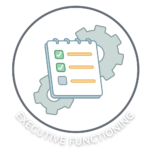
Self-regulation, the ability to manage one’s thoughts, emotions, and behaviors effectively, is a fundamental skill that lays the groundwork for success in academics, social interactions, and personal well-being. In this blog, we’ll explore why starting the journey of teaching self-regulation early in elementary school is crucial and provide insights into how educators can integrate self-regulation instruction into their classrooms to support students’ development.
Importance of Teaching Self-Regulation Early in Elementary School
Teaching self-regulation in elementary school is vital for several reasons. At this pivotal stage of development, young children are shaping the habits and behaviors that will influence their future. Introducing self-regulation skills during this formative period equips students with crucial tools for emotion management, attentional focus, and decision-making. This instruction cultivates a supportive learning atmosphere where students feel empowered to regulate their behavior and address challenges effectively. By laying this groundwork in elementary school, we can pave the way for students to achieve academic success, social adeptness, and emotional resilience.
Lesson Plan: Building Self-Regulation Skills in Elementary Students
Objective: To introduce elementary students to the concept of self-regulation and provide opportunities for them to practice self-regulation skills.
Grade Level: Elementary (Grades 1-5)
Duration: Approximately 60 minutes
Materials Needed:
- Interactive Worksheet: “How to Get Started” (provided separately)
- Whiteboard or chart paper
- Markers
- Writing utensils
- Timer
- Reflection worksheets
Warm-Up
Engage students with a brief mindfulness activity or discussion prompt related to self-regulation to set the stage for the lesson. You can use the “Color Breathing” mindfulness exercise below or find more activities in our YouTube channel. Begin by inviting students to find a comfortable seated position in their chairs, with their feet flat on the floor and hands resting on their laps. Explain to students that they will be practicing a brief mindfulness exercise to help them focus and prepare for the lesson on self-regulation.
Guide students through a mindful breathing exercise:
- Instruct students to close their eyes or gently gaze downward.
- Encourage students to take a deep breath in through their nose, counting to four as they inhale.
- Have students hold their breath for a moment, then exhale slowly through their mouth, counting to four again.
- Repeat this process several times, encouraging students to focus their attention on their breath and notice how it feels as it enters and leaves their bodies.
Get access to this and many other social skills activities by signing up for a free trial—no credit card required!
Sign up for your free trial here
Instant access to thousands of no-prep social skills activities, over 1000+ video lessons, and engaging games designed to enhance learning and development.
Group Discussion
After completing the worksheet, facilitate a group discussion where students can share their experiences, insights, and challenges related to self-regulation. Encourage students to discuss strategies for applying self-regulation skills in different situations.
Feedback and Reflection
Provide students with reflection prompts to reflect on their learning experience during the lesson. Prompt students to consider how they can apply self-regulation skills in their daily lives and set goals for further development.
Here are some reflection prompts tied to self-regulation for starting and achieving goals:
- Think about a time today when you had to focus on a task. How did you use self-regulation to help you stay on track?
- Reflect on a time when you felt frustrated during a lesson. How did you calm yourself down and get back to work?
- Consider a time when you had to wait your turn or share with others. How did you use self-regulation to be patient and respectful?
Conclusion
In conclusion, teaching self-regulation skills in elementary school is essential for laying the foundation for academic success, social development, and emotional well-being. By equipping students with the tools to manage their thoughts, emotions, and behaviors effectively, educators empower them to navigate challenges, set and achieve goals, and thrive in various aspects of their lives. As educators, it is our responsibility to integrate self-regulation instruction into the curriculum, creating a supportive learning environment where students feel empowered to regulate their own behavior and address challenges with confidence. By doing so, we set our students on a path toward long-term success, resilience, and fulfillment.
Sample Video
Students learn best from watching real students their own age model skills. Try out this sample video lesson. We offer our entire Social-Emotional Learning platform free for 14 days here!
Related Blog Posts:
Elementary Task Initiation Lesson
From Problems to Solutions: Teaching Problem-Solving Skills to Elementary Students
Interactive Deep Breathing Practice for Elementary Students






